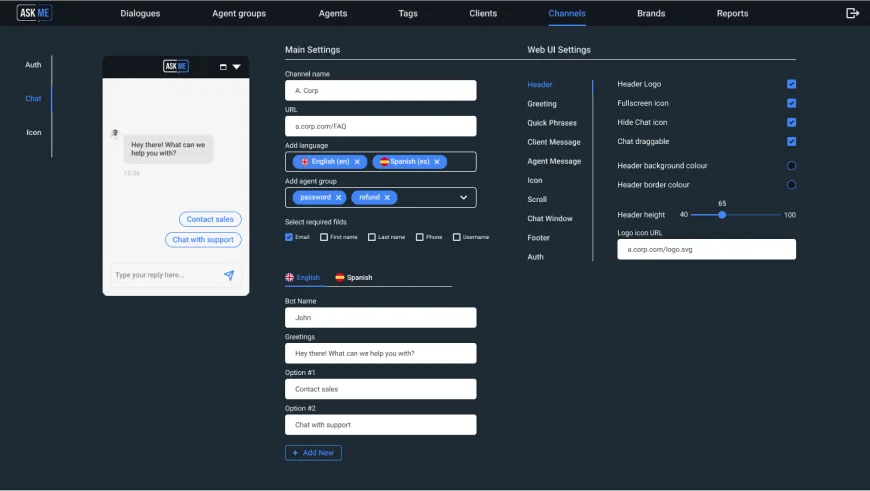A solutions architect also helps in designing comprehensive solutions that help in meeting the business requirements. Here the primary responsibilities include creating architectural blueprints, diagrams, and documentation which involves the technical components alongside their workflow. These professionals specialize in designing and implementing security solutions to protect an organization’s data and systems.

The highest credential is the ITIL Master for those experts who deal with IT service management and have deep experience with ITIL practices. Besides picking the technologies, IT solution architects define the development stages the team will go through and help with calculating the product’s cost. As the solution architect knows the architecture components, they know what people — front end, back end, iOS, Android developers — they need to involve. The role of solution architects is to provide technical guidance to help clients build solutions that are secure, reliable, cost-optimized, and fault-tolerant. In various ways, this person establishes relations between business problems and tech solutions and drafts every requirement needed to make that solution work. Even the most sophisticated software product is worth investing in only if it can bring real business value.
Solution architect vs. software engineer
Before we dive into the topic, let’s clarify who is a solutions architect in general. Anyone applying for the role of a Solutions Architect position must have a certain set of skills, education, certifications and relevant work experience. AWS certifications are valid for 3 years after which the credential holders have to go through recertification to prove their continued expertise and knowledge of the latest AWS technologies and best practices.
This is because their positions sound similar and the responsibilities overlap partially. Yet, each role is essential for a project’s success and cannot be substituted by another position. The solution architect must understand all of these constraints and consider the technical and business factors that ultimately need to align with the project’s goals. An IT solutions architect is responsible for creating and implementing an IT architecture that satisfies the intended business requirements. They begin by gathering business needs, learning the requirements’ details, and working with stakeholders to provide the desired outcome.
When do you need to hire a solution architect?
So, having one or more credentials demonstrates the candidate’s proficiency in particular skills. Let’s talk a bit more about solution architect responsibilities and roles before and during the development process. This use case is a classic example of how to leverage the knowledge of solution architecture. A solution architect can also review codes, engage in licensing requirements, and orchestrate the process (number of robots, schedules, configuration files, assets, queues, etc.). Documenting the efforts in the form of a process definition document/PDD and a development specification document (DSD) can also be a step in their activity as well as for the business analyst.
- As architects know the field, they’re aware of these constraints and ways to deal with them.
- They must effectively articulate technical complexities to non-technical personnel and facilitate discussions to drive consensus and decision-making.
- To determine which IT solutions would best serve the company’s objectives, you will need to have a solid understanding of the business as a solutions architect.
- Before deploying a product or software, the solutions architect is responsible for analyzing the company’s IT landscape to meet the business expectations with the current IT capabilities.
- Their keen eye for optimization allows them to drive continuous improvement within the organization’s technological infrastructure.
- We highly recommend you turn to a trusted outsourcing vendor with years of experience hiring software development professionals.
Certifications are intended to validate the skills and expertise of solution architects. So, having one or more credentials proves the expert’s proficiency in specific skills. If you have already realized the importance of solution architecture in your projects, the next step is to source and hire the person for the role. We’ve considered the core skills that a good solution architect must possess. While the practice can be managed in-house, there are companies that provide solution architecture consulting as a specific set of services. It would be strange indeed if the sphere that generated the very profession wouldn’t make extensive use of solution architect deliverables.
What Is A Solutions Architect?: Role & Responsibilities
Get hand-selected expert engineers to supplement your team or build a high-quality mobile/web app from scratch. Certifications help Solutions Architects to demonstrate their expertise in the tech field. In terms of organization structure, would you think Solution Architecture team should be under Enterprise Architecture or as a standalone unit in par with Enterprise Architecture? Developer.com content and product recommendations are editorially independent. Once the files are downloaded, all the raw files are used as an input in the next section to prepare a consolidated report and generate files specific to different vendors. Hence, those steps can be taken into another subprocess as shown in the following figure.
In addition, they also collaborate with various teams of developers, designers, network engineers, and database administrators to ensure high performance and efficiency of the software solution. In this blog, we will be filling you up with the roles and responsibilities of a solutions architect alongwith some of the most asked questions on the internet on the same. Now that you know the roles of a solutions architect in bringing business excellence let’s discover the responsibilities of a dedicated IT solutions architect. The salary of a Solutions Architect reflects their extensive experience and their critical role in driving technological success within organizations. As businesses increasingly rely on complex IT systems and digital transformation, the demand for skilled Solutions Architects continues to surge. An extensive comprehension of architectural principles and frameworks such as TOGAF or Zachman is indispensable for a Solutions Architect.
What is a solutions architect? A vital role for IT-business alignment
They typically have a strong custom software development, system design, and project management background and may also have specialized knowledge in a particular industry or technology domain. We hope now you have got an idea of – What is a solutions architect and can move further with the process. Solution architects possess a broad understanding of the latest technologies and determine how they can solve business problems. In addition, roles and responsibilities of solution architect the professionals work closely with stakeholders such as business analysts, developers, and project managers to understand the project requirements and design an appropriate solution. Most will already have several years (5-10) of hands-on experience in software development, network administration, or information technology. It helps them develop a strong understanding of the tools and technologies involved in designing solutions.

To become a successful solutions architect, you will need a bachelor’s or post-graduate degree in IT, computer science, software engineering, or equivalent. There are also several certificates recommended solution architects achieve before applying for the position. They will work directly with EAs, TAs, business architects, etc. to achieve future state architecture. IT architects and their respective teams work through various aspects of a project life cycle; devising, planning, and designing the implementation of improved processes, business capabilities, and applications. A cloud architect is responsible for overseeing a company’s cloud computing strategy. SAs need a strong knowledge of cloud computing systems and work with cloud architects to develop solutions related to the systems in place.
Role of a Solutions Architect
A solution architect is also responsible for the continuous maintenance of a system developed. This person makes sure that there is a secure and stable IT environment for a software solution to work properly. Solution architects also ensure that such a solution will remain relevant in terms of the business value it should deliver. Finally, a solution architect participates in making the most crucial technical decision that may impact the project’s ultimate results (for example, technology stack and integration with third-party systems). The solution architect works directly on the project while the business analyst develops the requirements. These specialists are responsible for the project vision that underlies the solution and translates that vision into reality.

The highest credential is the ITIL Master for those professionals who work in IT service management and have extensive experience with ITIL practices. Enterprise architecture, which we covered in a dedicated article, focuses on building complex enterprise ecosystems and solves high-level strategic issues. Enterprise architecture defines the strategic directions of the business architecture, which then leads to an understanding of what technology facilities are needed to support that architecture.
Business Hours
Once the SA has created the architecture it’s time to communicate and sell it. The final component to the role of solution architect is the motivation and guidance of the development leads. Development leaders need to buy into and accept the architecture, to know how the pieces will fit together at a high level. They must also see the art portion of the architecture to get an appreciation of the subtle nuances of their portion of the architecture. That elegance helps to maintain cohesion between various parts of the design and encourages simplicity. It is necessary for the lower level design and approach to match the higher-level architecture for the solution to be cohesive.
